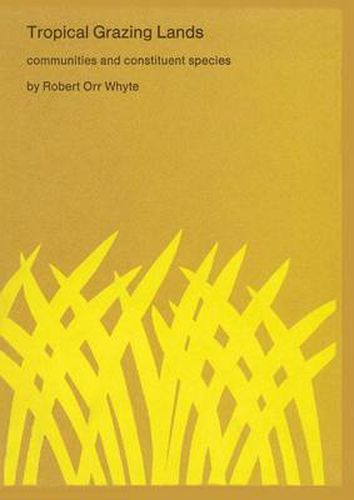Readings Newsletter
Become a Readings Member to make your shopping experience even easier.
Sign in or sign up for free!
You’re not far away from qualifying for FREE standard shipping within Australia
You’ve qualified for FREE standard shipping within Australia
The cart is loading…






This title is printed to order. This book may have been self-published. If so, we cannot guarantee the quality of the content. In the main most books will have gone through the editing process however some may not. We therefore suggest that you be aware of this before ordering this book. If in doubt check either the author or publisher’s details as we are unable to accept any returns unless they are faulty. Please contact us if you have any questions.
1.1 Objective and scope These chapters are not intended as a treatise on range management of tropical grazing lands, nor on the agronomy of sown pastures and cultivated fodder crops, aspects of applied science that are only one stage above scientific farming and use of land. An attempt is made to present the vegetation sciences, or botany and ecology in their widest aspects, as the essential background for their application in economic land use and plant and animal husbandry. The basic thesis is that science is global, but that its practical application is restricted to specific biological and socio economic habitats. The region covered is termed the intertropical zone. This comprises the equatorial latitudes, the tropics and subtropics. It is not only that part of the globe lying between latitudes 30 Degrees north and south of the Equator, as proposed by some writers (DAVIES, W., 1960; repeated by DAVIES & SKIDMORE, 1966). Rather is it those regions of the world in which, at the lower elevations, certain families and members of the Gramineae and Leguminosae grow wild or can be cultivated. It may be a matter for discussion whether these plants in their wild communities or sown or planted crop mixtures are better indicators of a biological environment than the instruments and criteria of the meteorologists.
$9.00 standard shipping within Australia
FREE standard shipping within Australia for orders over $100.00
Express & International shipping calculated at checkout
This title is printed to order. This book may have been self-published. If so, we cannot guarantee the quality of the content. In the main most books will have gone through the editing process however some may not. We therefore suggest that you be aware of this before ordering this book. If in doubt check either the author or publisher’s details as we are unable to accept any returns unless they are faulty. Please contact us if you have any questions.
1.1 Objective and scope These chapters are not intended as a treatise on range management of tropical grazing lands, nor on the agronomy of sown pastures and cultivated fodder crops, aspects of applied science that are only one stage above scientific farming and use of land. An attempt is made to present the vegetation sciences, or botany and ecology in their widest aspects, as the essential background for their application in economic land use and plant and animal husbandry. The basic thesis is that science is global, but that its practical application is restricted to specific biological and socio economic habitats. The region covered is termed the intertropical zone. This comprises the equatorial latitudes, the tropics and subtropics. It is not only that part of the globe lying between latitudes 30 Degrees north and south of the Equator, as proposed by some writers (DAVIES, W., 1960; repeated by DAVIES & SKIDMORE, 1966). Rather is it those regions of the world in which, at the lower elevations, certain families and members of the Gramineae and Leguminosae grow wild or can be cultivated. It may be a matter for discussion whether these plants in their wild communities or sown or planted crop mixtures are better indicators of a biological environment than the instruments and criteria of the meteorologists.